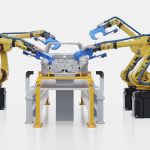Procurement has long been at the crossroads of business transformation, yet it continues to lag other departments when it comes to digital adoption. While the obstacles are familiar, the answers won’t come from adopting more tech or tighter control.
Today’s most progressive supply chain leaders are taking a radically different approach: building transformation strategies around value, agility, and behavior—not just software.
Why Procurement’s Tech Journey Is Uniquely Tough?
Procurement’s digital dilemma isn’t about resistance to change. It’s about being caught between complexity and convention. With a remit that spans the entire organization—supplier management, risk mitigation, compliance, and cost control—procurement leaders are forced to juggle competing priorities with often outdated, fragmented systems.
Challenges persist: a culture that prizes control over innovation, processes optimized for yesterday’s problems, and a lack of clarity on what “digital transformation” even means in practice. Technology is frequently introduced to speed up old ways of working rather than reimagine them, leaving procurement teams overwhelmed and underwhelmed by the results.
But enough about the problems—here’s what forward-thinking procurement leaders are doing to change the game. And while that’s daunting, it’s also where the opportunity lies.
Rewriting the Playbook: 5 Strategies to Drive Digital Success
1. Flip the Transformation Narrative: Start with Business Value, Not Tech Specs
Too many digital projects start with technology selection and end with unmet expectations. The smarter approach? Begin with a commercial or risk-focused business case. Anchor the transformation in something tangible—supplier innovation, ESG goals, agility in volatile markets—then select tech that enables that outcome. The question isn’t “What tool do we need?” It’s “What’s the problem we must solve that tech can help with?”
2. Design for Adoption, Not Just Implementation
A new platform doesn’t mean much if it gathers dust. Adoption is where the ROI lives. Modern procurement leaders are borrowing from product teams—building internal marketing plans, involving users early, and treating stakeholders like customers. Think user journey mapping, frictionless interfaces, and training that’s practical, not performative. Adoption isn’t the final step, it’s the strategy from the start.
3. Go Modular, Not Monolithic
The days of five-year ERP rollouts are over. Agile procurement teams are now building layered digital ecosystems: plug-and-play tools that integrate with existing systems and evolve as business needs change. Think of your stack like a supply base, diversify it. This modular approach accelerates results, reduces risk, and lets teams pilot innovation without a 12-month procurement cycle.
4. Leverage Data as a Competitive Weapon
It’s time to stop treating data as something we clean up after the fact. Leading teams are investing in predictive analytics, not just reporting dashboards. They’re embedding AI to forecast demand shifts, evaluate supplier risk in real time, and flag compliance gaps before they become audit findings. Procurement shouldn’t just see what’s happening, it should be first to know what’s coming.
5. Embed Procurement Into the Business (and Vice Versa)
Digital change sticks when procurement is no longer a silo. That means embedding procurement people in business units, hiring digital-native talent from outside the function, and setting cross-functional KPIs that measure business impact, not just savings. Leading CPOs are repositioning their teams as internal consultants—co-creators of commercial value, not gatekeepers of compliance.
Beyond Optimization, Toward Redefinition
Procurement’s digital journey has often been framed as a matter of catching up, bridging the gap between operational legacy and technological possibility. But perhaps that framing is part of the problem. The function’s value doesn’t come from how fast it digitizes, but from how clearly it redefines its role within the business.
What’s becoming clear is that the most enduring progress isn’t being made through software selection alone. It’s emerging from a more fundamental shift in mindset: one that sees digital transformation not as a project, but as an ongoing capability—one rooted in curiosity, cross-functional integration, and a willingness to rethink the familiar.
The most effective procurement leaders aren’t simply automating outdated processes or chasing the next platform. They are repositioning procurement as a strategic partner—one that enables the business to respond to volatility, unlock value from supply networks, and make smarter decisions at pace.
Digital is the enabler. But it’s leadership, not technology, that will determine whether procurement remains a function of control or becomes a function of change.







